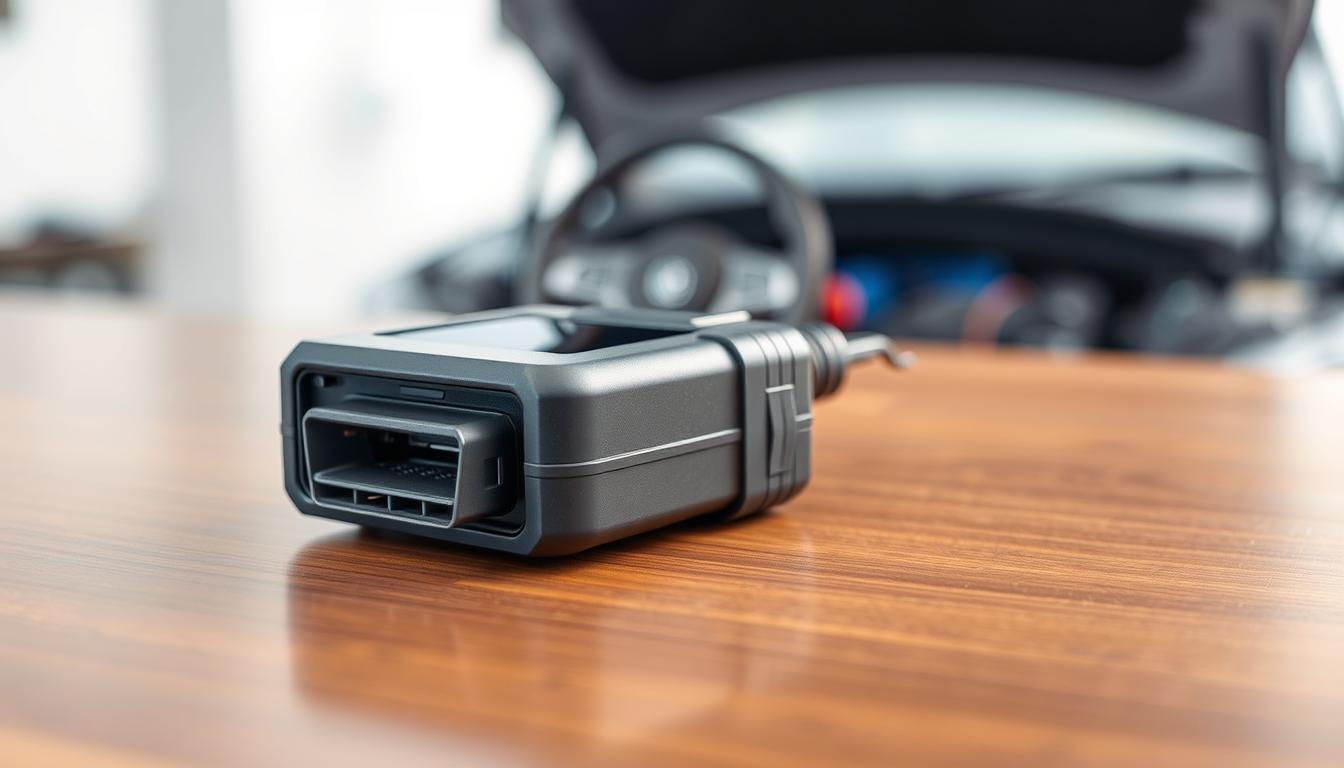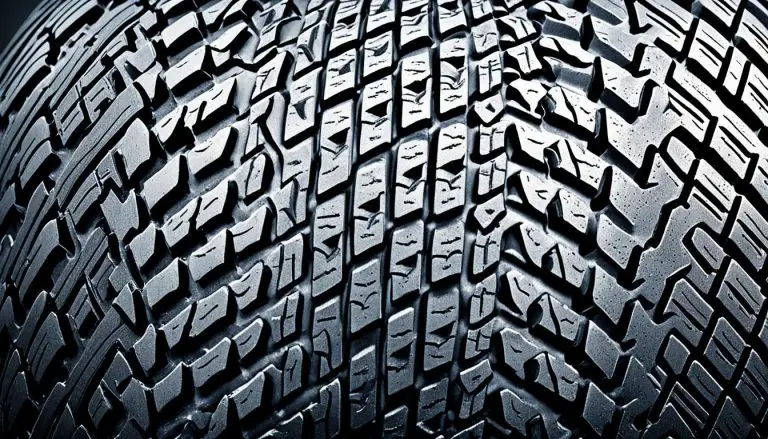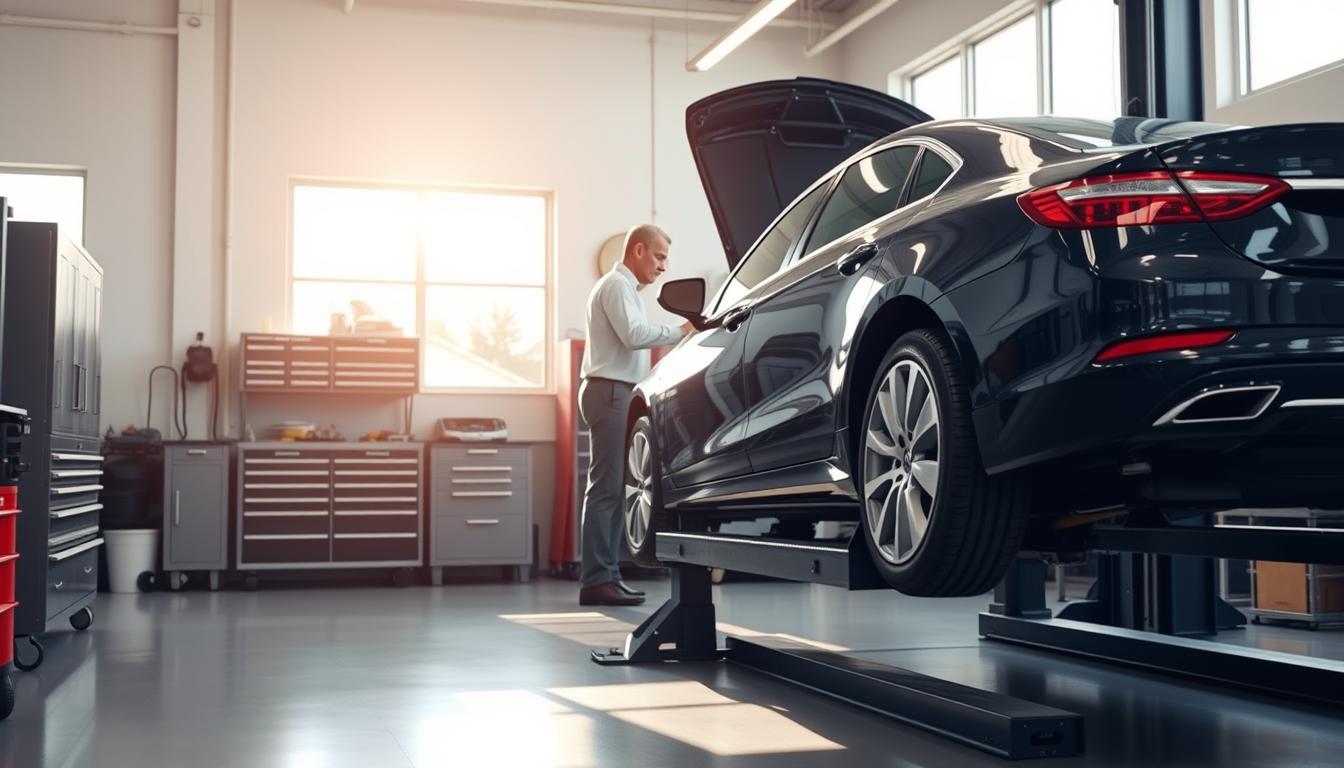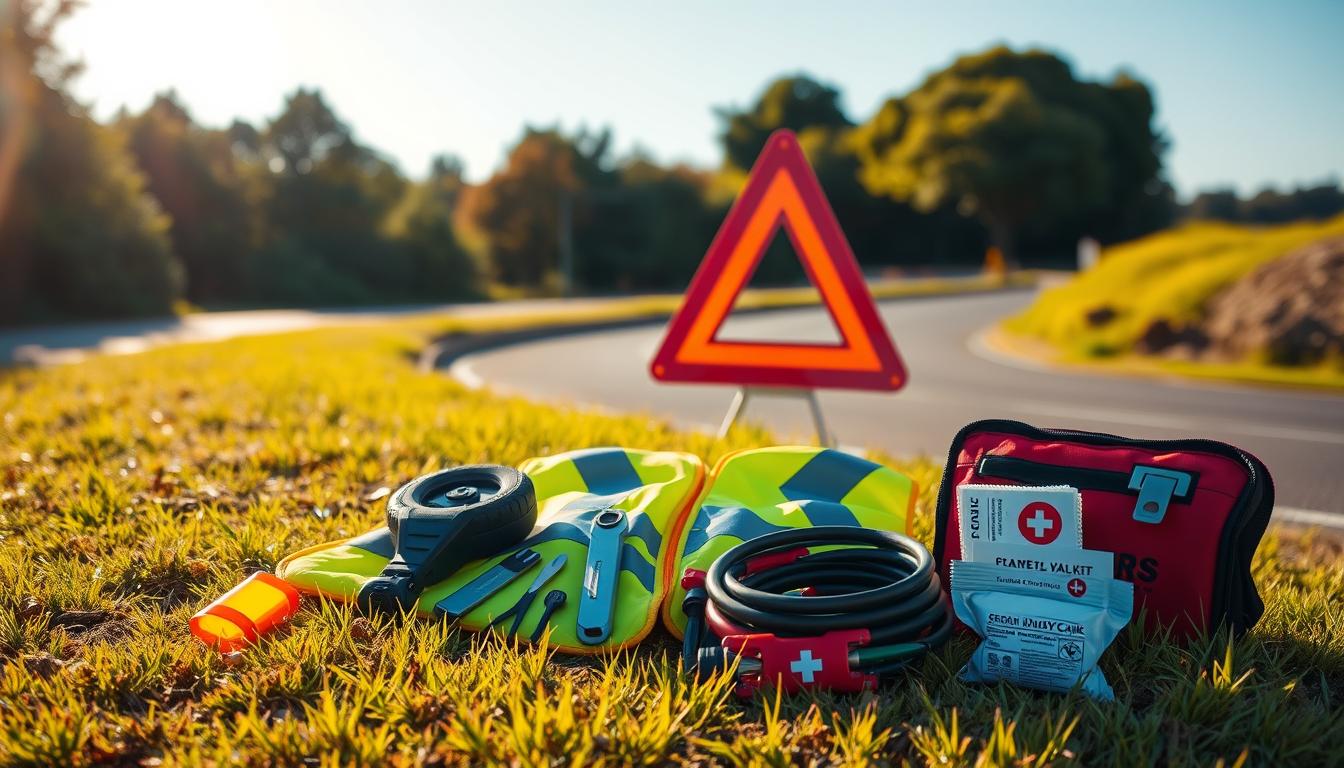
Did you know that steer tires should have at least 4/32″ tread depth for best control on wet roads? This fact underlines the big role tires play in keeping you safe. Your tires link your car to the road, influencing how well you stop, handle curves, use gas, and ride.
Though you might know the basics of tire care, there’s more to learn. Understanding some less known tire facts can improve how you care for them. In this piece, we’ll dive into 10 surprising tire facts, including tire pressure, tread depth, when to change tires, and how to maintain them well. This knowledge can help you get the most out of your tires, making your driving safer and smoother.
Understanding Tire Pressure
Maintaining the right tire pressure is key for top performance and safety. Tires with too little air can lower gas mileage and wear oddly. On the other hand, too much air means a bumpy ride and a higher chance of getting a flat. It also makes tires wear out more in the middle.
The Importance of Proper Inflation
Your car’s manual will show the correct PSI for your tires. If you don’t have it, contact the tire maker. Keeping your tires inflated to the right pressure, generally around 30 to 35 PSI, is very important. It helps keep your tires lasting longer, allows your car to use less gas, and makes driving safer and smoother.
Consequences of Under-Inflation and Over-Inflation
The NHTSA says having low air in your tires makes a severe crash 300% more likely. For each 1-bar pressure drop (about 14.5 psi), your car uses 3-5% more gas. But, having the right air pressure can make sure your tires grip the road well. This prevents them from sliding on water and keeps them from wearing out too quickly.
Tread Depth and Traction
A tire’s tread depth is key for traction on wet or slippery roads. Places with lots of rain need good tread depth for the best grip and braking performance. Always check your tires’ tread, since low tread can make your car hard to steer and unsafe, especially in the rain.
Having the right tread depth lets your tires push water away. This keeps your car from sliding and gives you the traction you need for safety on wet roads. If you watch your tread and change your tires when they’re worn, your car will drive better and you’ll feel more secure, even in tough weather.
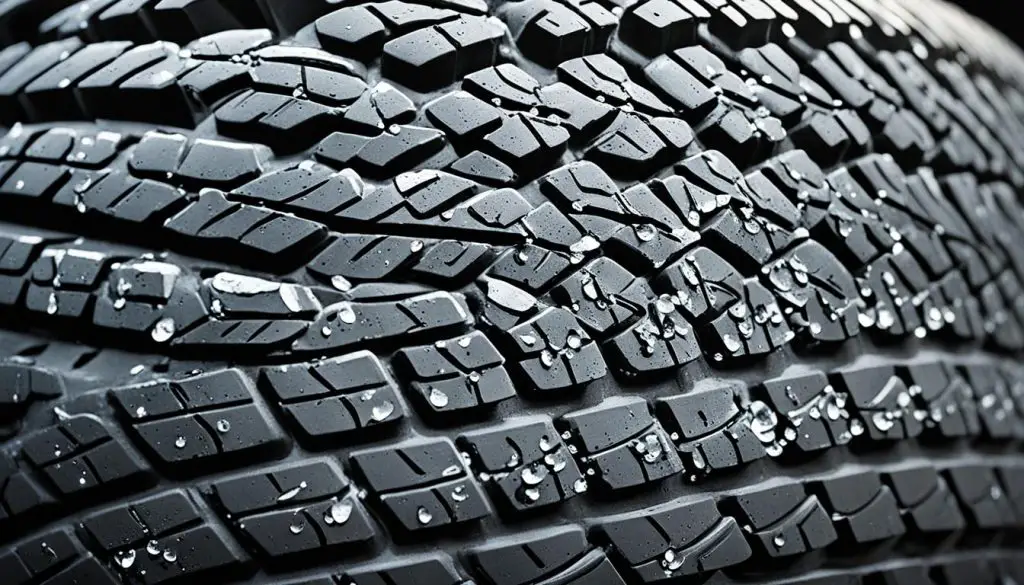
Tire Facts: Seasonal Considerations
As the weather changes, so do the needs of your tires. Choosing the right tires for the current weather is crucial. This choice affects how well your car drives and how safe you are. Let’s look at the differences between summer tires, winter tires, and all-season tires. We’ll see how each type impacts your car’s performance in different weather.
Summer Tires vs. Winter Tires
Summer tires work best in warm weather. They give your car the best grip on both dry and wet roads in summer. Their design and rubber help your car turn well and stop fast on roads that are wet. Winter tires, however, are made for snowy and icy roads. They have deeper treads and a special kind of rubber. This keeps the tires flexible even when it’s very cold. Winter tires make your car more stable, help it stop better, and give you more control in winter’s tough weather.
All-Season Tires: A Compromise
If your area doesn’t have really harsh winters or hot summers, all-season tires might be best for you. All-season tires are designed to work fairly well in both warm and cold conditions. They may not be as great as specific summer or winter tires, but they offer a good middle ground. This makes them a good choice for people looking for one set of tires for the whole year.
The best tire type depends on where you live and what the weather is like there. Choosing the right tires can make your car easier to drive, more stable, and safer. This ensures you’re more confident on the road, no matter what the weather brings.

Extending Tire Lifespan
Keeping your vehicle’s tires in great shape is important for safety and saving money. A big part of making your tires last longer is tire rotation. This means moving them around regularly. It helps them all wear down evenly. Front-wheel, rear-wheel, and all-wheel drive vehicles all wear tires in different ways. Rotating tires stops them from wearing out too soon.
The Benefits of Tire Rotation
Tire rotation spreads wear across all four tires. This avoids uneven wear, which can affect how your car handles, its fuel use, and tire life. Doing this every 5,000 to 8,000 miles keeps your tires in top shape for longer. It also makes your travels smoother and more stable.
Tire Age and Replacement
Tire age is just as important as how much tread they have left. Tires can only last so long because of heat, sunlight, and driving. If your tires are more than six years old, replacing them is a good idea. Even if they look okay, older tires are riskier. They might blow out, lose grip, or not handle well in the rain or snow.
Proper Wheel Alignment
Having the right wheel alignment is key for tire health and how well your car runs. When wheels are not aligned, tires wear out quickly. This can make you use more fuel. Good alignment keeps your car steady and stops tires from wearing out unevenly. It helps your tires last longer.
By making sure to rotate, replace, and align your tires correctly, you make them last longer. Your car runs better, and you stay safe on the road.
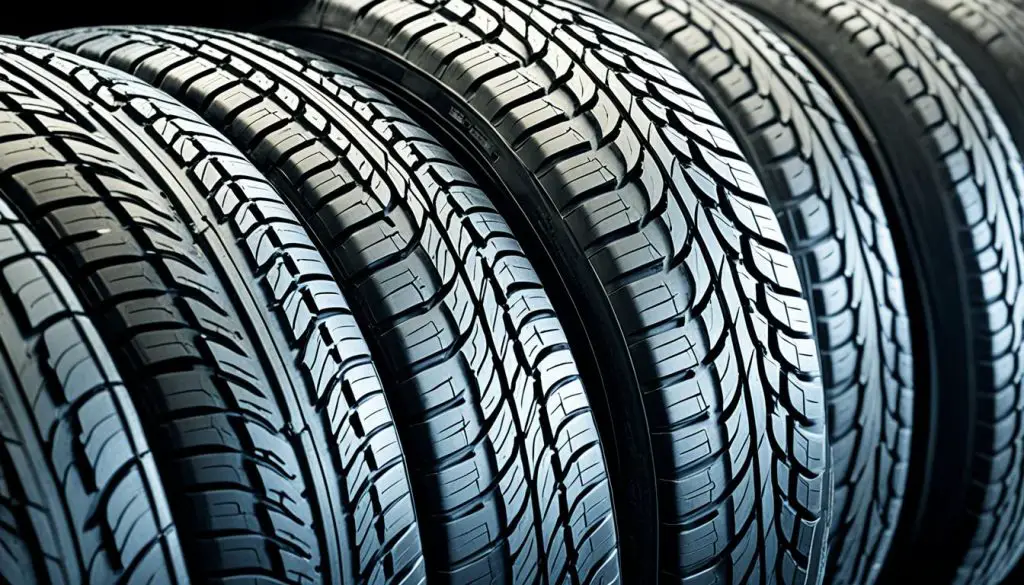
Conclusion
Learning the tire facts in this article puts you in control as a car owner. This knowledge helps in making smart choices for tire care, usage, and safety. Knowing about the right tire pressure, the importance of good tread depth, and why tire rotation is good, is key. It can improve your tires’ life, better your vehicle’s performance, and keep you safe while driving.
With regular tire maintenance and advice from a reliable mechanic, your tires will stay in top condition. This care promises a lot of worry-free trips. Being proactive with your tires benefits not only fuel efficiency but also your vehicle’s safety and overall performance. It means a smooth journey ahead with confidence.
Know that well-kept and the right pressure in tires is crucial for safe driving. Using the pointers in this article lets you decide wisely and improves your vehicle. It secures a worry-free, safe driving experience over the years.
FAQ
What is the recommended tire pressure for my vehicle?
Find the correct tire pressure in your owner’s manual or on a sticker inside the driver’s door. The usual range is 30 to 35 PSI. This level keeps your tires in good shape, boosts fuel economy, and makes your driving safer and smoother.
How do I know when my tires need to be replaced?
Tires wear out over time, no matter how much tread they have left. Age, heat exposure, and use all wear tires down. It’s wise to swap tires older than six years, even if they look good.
What are the benefits of rotating my tires?
Rotating your tires evenly distributes wear, lengthening their life. It also improves your car’s performance. Because different types of cars wear tires differently, this maintenance step is crucial.
What’s the difference between summer, winter, and all-season tires?
Summer tires grip well on dry or wet roads. Winter tires, meanwhile, are best for snow and ice. All-season tires try to do both but might not be the best in extreme weather.
How important is tread depth for wet weather driving?
Tread depth is key for gripping wet or slick roads. Good tread helps your tires grasp the road better and stop when you need to. If your tires are too worn, they’re not as safe in the rain.

